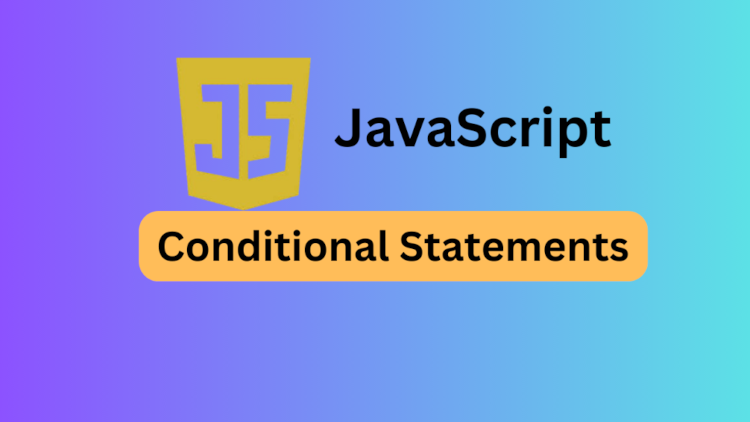
In JavaScript, When we need to execute specific blocks of code based on certain conditions, we always use Conditional Statements. It helps to control the flow of execution. In this article, we will learn about JavaScript Conditional Statements in depth with the help of examples.
1. What are Conditional Statements?
Depending on various situations, conditional statements can execute various actions. Depending on whether conditions are met, they evaluate expressions and run the associated code blocks.
2. Types of Conditional Statements
- if statement
- if…else statement
- if…else if…else statement
- switch statement
- Ternary (? :) operator
- Logical operators (&&, ||, !)
if Statement
The if statement executes a block of code if the given condition evaluates to true.
Syntax
if (condition)
{
// Code to execute if condition is true
}
Example
let age = 20;
if (age >= 18)
{
console.log("You are eligible to vote.");
}
if…else Statement
The if…else statement allows for two possible outcomes: one when the condition is true and another when it is false.
Syntax
if (condition)
{
// Code to execute if condition is true
}
else
{
// Code to execute if condition is false
}
Example
let num = 10;
if (num % 2 === 0)
{
console.log("Even number");
}
else
{
console.log("Odd number");
}
if…else if…else Statement
When multiple conditions need to be checked, an if…else if…else statement is used.
Syntax
if (condition1)
{
// Code to execute if condition1 is true
}
else if (condition2)
{
// Code to execute if condition2 is true
}
else
{
// Code to execute if none of the conditions are true
}
Example
let score = 85;
if (score >= 90)
{
console.log("Grade: A");
}
else if (score >= 80)
{
console.log("Grade: B");
}
else if (score >= 70)
{
console.log("Grade: C");
}
else
{
console.log("Fail");
}
Also read about JavaScript Operators
switch Statement
The switch statement allows for multiple possible values of an expression. It is an alternative to using multiple if…else if statements.
Syntax
switch(expression)
{
case value1:
// Code to execute if expression === value1
break;
case value2:
// Code to execute if expression === value2
break;
default:
// Code to execute if none of the cases match
}
Example
let day = "Monday";
switch (day)
{
case "Monday":
console.log("Start of the work week");
break;
case "Friday":
console.log("Weekend is near");
break;
default:
console.log("Regular day");
}
Ternary Operator
The ternary operator is a shorthand way of writing if…else statements.
Syntax
condition ? expressionIfTrue : expressionIfFalse;
Example
let age = 17; let vote_result = (age >= 18) ? "Eligible for voting" : "Not eligible for voting"; console.log(vote_result);
Output
Not eligible for voting
Logical Operators
These type of operators are used for combine multiple conditions.
| Operators | Description |
| && | Logical AND |
| || | Logical OR |
| ! | Logical NOT |
Example
let isAdult = true;
let hasID = false;
if (isAdult && hasID)
{
console.log("Allowed entry");
}
else
{
console.log("Entry denied");
}
Best Practices
- Always use switch statements, When dealing with multiple cases. It make the code cleaner.
- Try to keep condition simple, do not complex. It improve readability.
- If you are writing simple condition, use ternary operator. It is great for simple conditions. But always avoid in case of complex logic.
- When appropriate, utilize short-circuiting and steer clear of pointless checks.
Conclusion
Programmers can execute code selectively based on conditions by using conditional statements, which are an essential component of JavaScript. Writing legible and efficient code is facilitated by knowing and successfully utilizing if, else, switch, ternary, and logical operators. You will be able to create dynamic apps much more effectively if you can grasp these ideas.











